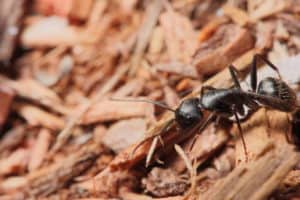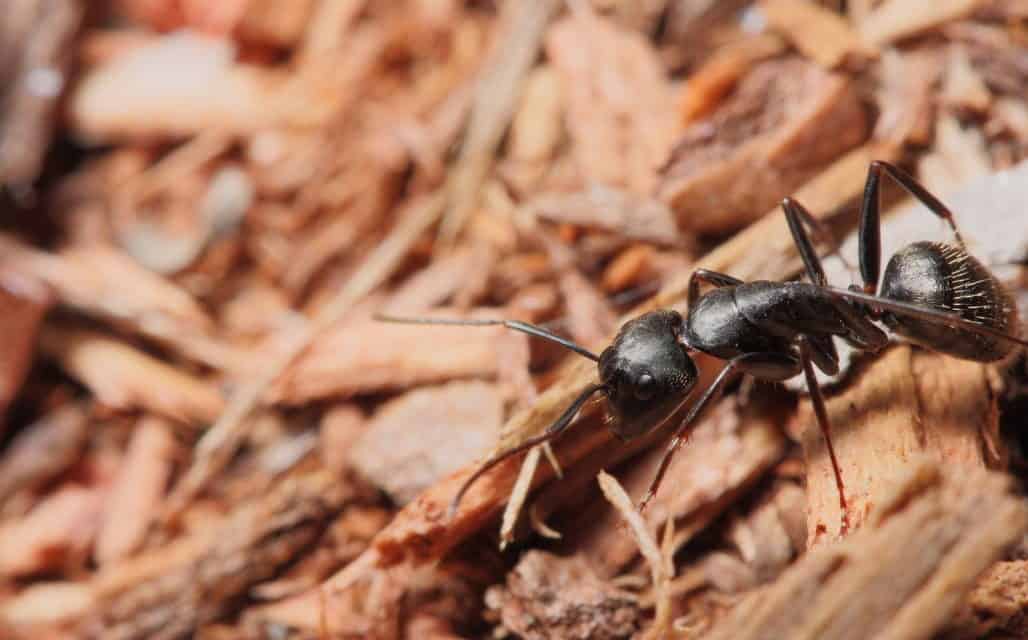
CONQUERING CARPENTER ANTS
When it comes to ants, there is no “one size fits all” treatment for all species and circumstances. In fact, what will work to prevent and control infestations of one species of ant may actually encourage infestation when applied to other species. When inspecting for Carpenter Ant infestations, look for the following indicators:
Physical Appearance – Carpenter Ants are often called the “Big Black Ant” although some subspecies may be reddish-brown in color. Size may range from ¼ inch to ¾ inch. The ants you see may be either wingless workers or winged reproductive ants from the colony.
Frass – As carpenter ants bore their nests, they leave behind several piles of fibrous, finely shredded sawdust-like material called “frass” which is made up of wood shavings, soil, and insect parts.
Sounds – If you identify a potential nest site, try tapping against it with a screwdriver with your ear placed to the wall. Alarmed Carpenter Ants will make a faint clicking or rustling sound.
Wood Damage- Look for smooth, clean galleries and small windows or slit-like openings in infested wood as a sign of nesting. These slits acts as “garbage chutes” used to dispose of frass and other materials.
Trails – Carpenter ants form tight, closely associated trails that can be traced to the nesting area. Look for trails along carpet edges, door frames, fence tops, etc.
Prevention
Caulk cracks and crevices around the exterior of the home that provide entry.
Trim branches and limbs of trees and shrubs that touch the building to keep ants from gaining access via these routes.
Eliminate damp conditions that promote wood decay such as water leaks and poor drainage problems around foundations.
Replace decayed or damaged wood and correct problems that caused the decay, such as clogged rain gutters or leaky roofs.
Increase ventilation to damp areas beneath buildings and in attics.
Store firewood up off the ground and several feet away from buildings to discourage carpenter ant colonies. If you suspect infestation in your woodpile, do not store firewood inside.
Locate nests
Observe ant activity at night.
Follow trails.
Sawdust accumulations with pieces of dead ants are good indicators.
Main nests are often outside in old tree stumps, fence posts, or firewood piles.
Satellite colonies may nest indoors on moist wood.
Control
Many natural products are on the market that discourage carpenter ants from forming nests, but short of getting an anteater, your best bet is to find the least-caustic product that eliminates the existing nest, rather than just causing the nest to move locations. Making an environment unsuitable for ants is an arduous vigil if your goal is to avoid using poisons.
SOURCES:
Agriculture and Natural Resources, University of California
DoMyOwnPestControl.com












